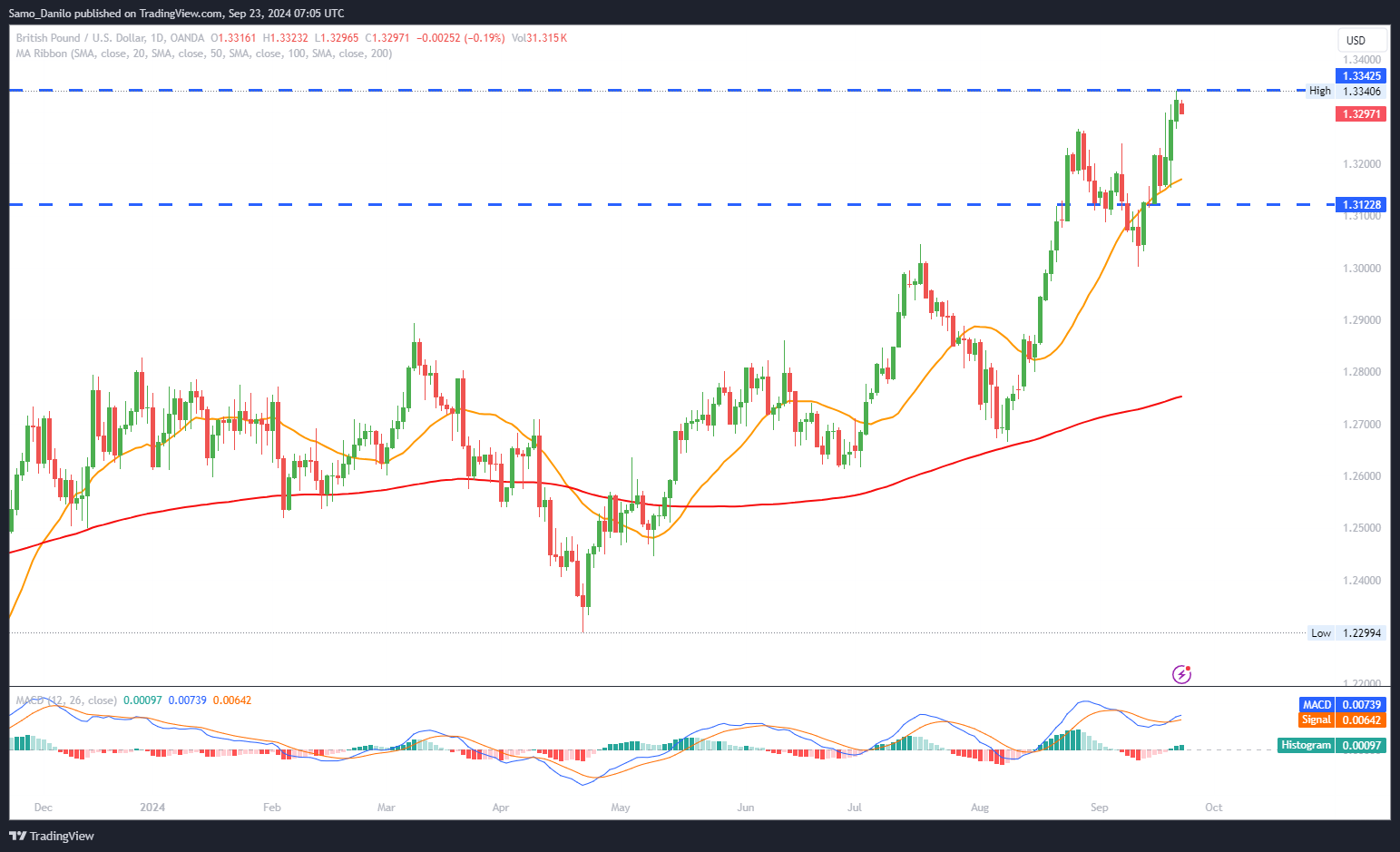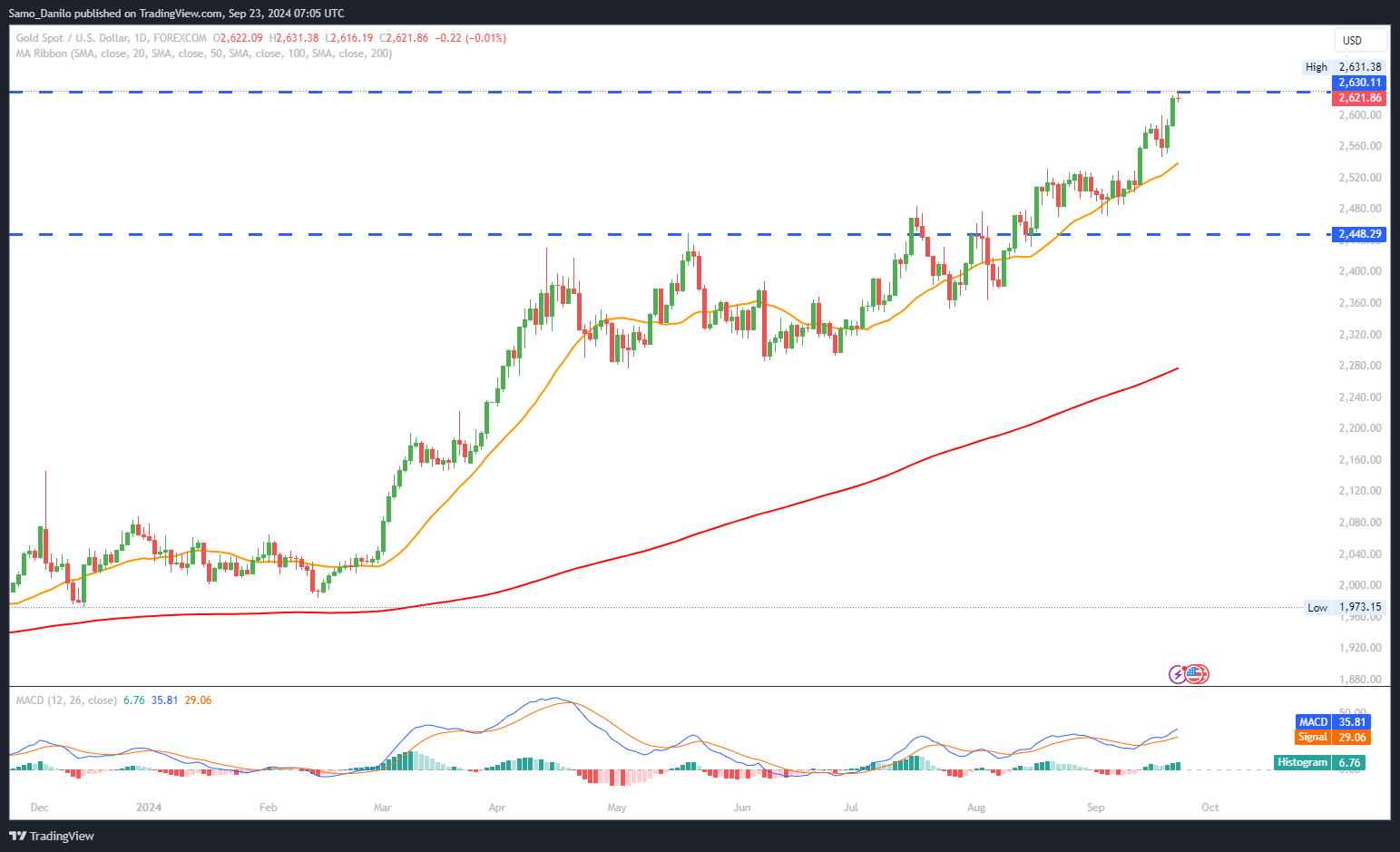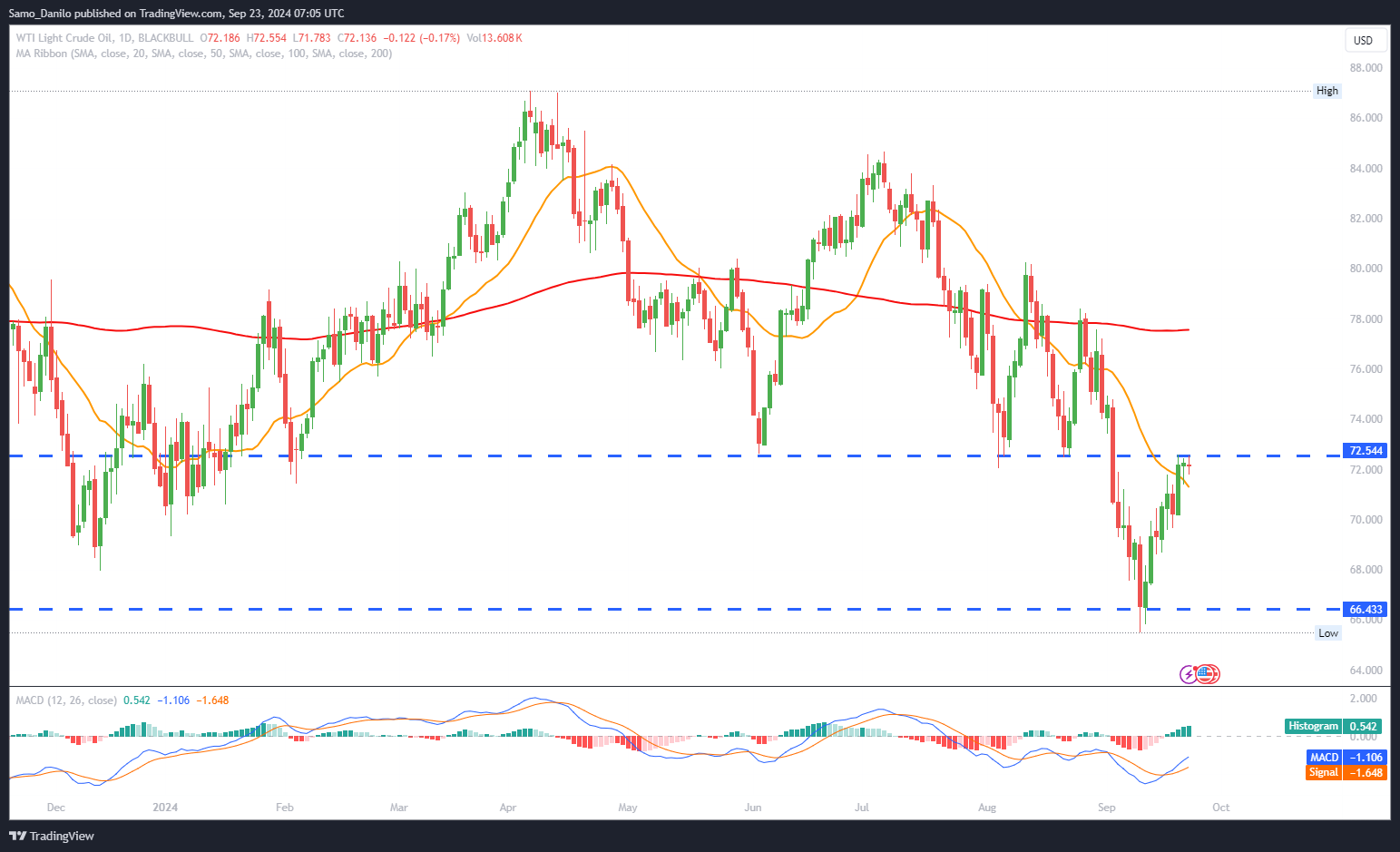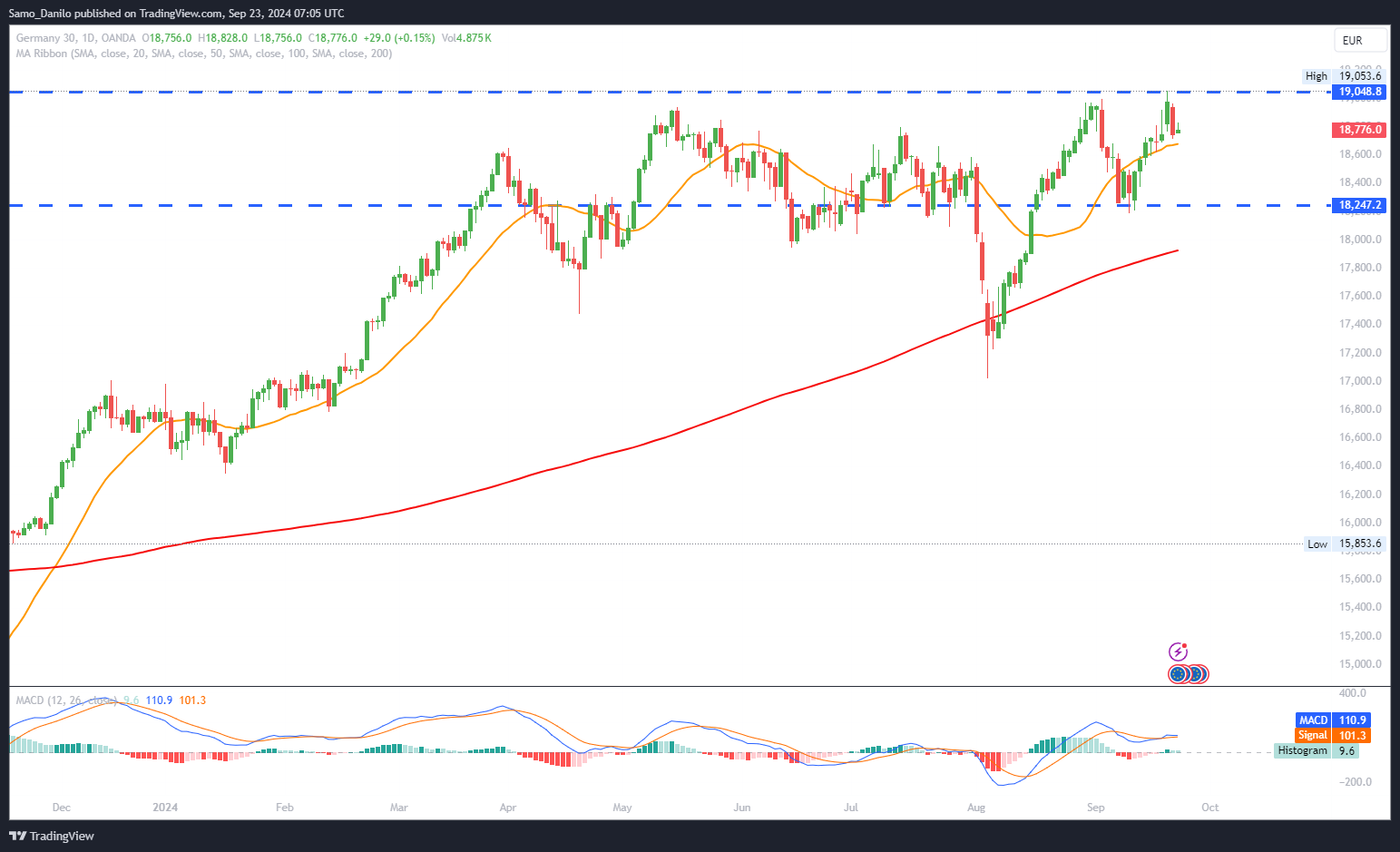EURUSD
- Current Price Action: The EUR/USD pair remains positive, trading above 1.1150 during the early European session on Monday. The Euro continues to gain ground against the US Dollar, benefiting from recent market sentiment and policy expectations.
- US Dollar Outlook: The US Dollar (USD) is under pressure amid increasing expectations for further interest rate cuts by the Federal Reserve (Fed) in 2024. This prospect could weaken the USD, providing additional support for the EUR/USD pair.
- Fed's Stance: Despite rising rate cut expectations, Fed Chair Jerome Powell emphasized during his post-meeting press conference that the Fed is not rushing to ease policy. Powell made it clear that half-percentage point rate cuts should not be seen as the new pace for future adjustments, suggesting a more cautious and measured approach moving forward.
- ECB's Approach: On the European side, ECB President Christine Lagarde reiterated on Friday that the European Central Bank (ECB) must maintain a flexible monetary policy to adapt to a constantly changing economic environment. This flexibility could mean the ECB is prepared to respond as conditions evolve, but the specific direction remains uncertain.
- Upcoming Data: Traders will closely monitor the Purchasing Managers Index (PMI) data from the Eurozone and Germany, scheduled to be released later in the day. The PMI data will provide critical insight into the economic health of the region and could influence the EUR/USD trajectory depending on how the figures align with expectations.
Closing statement: The EUR/USD pair maintains a bullish bias as the US Dollar weakens under the possibility of future Fed rate cuts. However, Fed Chair Powell's cautious tone may temper these expectations. On the other hand, ECB President Lagarde's adaptable approach adds further complexity. The upcoming Eurozone and German PMI data could act as a short-term catalyst for the pair, with positive numbers likely boosting the Euro further. The next key level to watch for the pair is 1.1200.
GBPUSD
- Current Price Action: GBP/USD trades on a slightly softer note near 1.3310 during Monday's Asian session. The pair has come under pressure from a modest recovery in the US Dollar (USD), which weighs on the British Pound after its recent gains.
- US Dollar Recovery: The USD shows signs of recovery following remarks from Philadelphia Fed President Patrick Harker on Friday. Harker expressed confidence that the Federal Reserve has successfully navigated the challenging economic environment in recent years, adding support to the USD despite ongoing rate-cut expectations.
- Bank of England (BoE) Decision: The BoE opted to hold interest rates at 5.0% in its latest monetary policy meeting. This decision followed the release of the UK Consumer Price Index (CPI) for August, which remained steady at 2.2% YoY, reflecting stable inflation pressures in the UK. The decision to keep rates unchanged highlights the central bank's cautious approach in light of recent economic data.
- Upcoming PMI Data: Investors are now shifting their focus to the flash PMI readings for both the UK and US, which are due later Monday. These figures will be closely watched for insights into the health of economic activity in both countries, potentially providing fresh directional cues for GBP/USD.
- US Inflation Gauge: Looking ahead, the US Personal Consumption Expenditures (PCE) index, the Fed's preferred inflation gauge, will be released on Friday. This data could offer valuable clues on the US inflation outlook and influence the Fed's future interest rate decisions, potentially impacting the USD and the broader market sentiment.
| SMA (20) | Rising |
|
|
| RSI (14) | Rising |
|
|
| MACD (12, 26, 9) | Rising |
|
|
Closing statement: The GBP/USD pair remains under pressure as the US Dollar recovers modestly, though the Bank of England's decision to keep rates steady may provide underlying support for the British Pound. Investors will closely monitor the UK and US PMI data for any signs of economic momentum or slowdown. A positive surprise in either region could sway the pair's direction. The GBP/USD may continue to trade within a narrow range until further clarity emerges from the upcoming PCE inflation data later this week. Key levels to watch include 1.3300 as immediate support and 1.3400 as the next potential resistance.
GOLD
- Current Price Action: Gold price continues to build on its two-day uptrend in European trades on Monday, despite a modest recovery attempt in the US Dollar (USD). The precious metal is showing resilience, supported by its status as a safe haven, especially amid rising geopolitical tensions.
- US Dollar Recovery: The USD buyers are attempting a cautious recovery after a relatively subdued performance following last week’s US Federal Reserve (Fed) rate cut. The Fed delivered a jumbo rate cut, which initially weighed on the USD. However, escalating Middle East geopolitical tensions are helping the Dollar regain some ground as markets also price in another potential 50 bps Fed rate cut for November.
- US Government Funding: The US Dollar finds additional support from the US House Republicans’ announcement of a stopgap spending bill that aims to fund the government through December 20. This development, if successful, could mitigate near-term risks of a government shutdown and support the USD's recovery. The bill is expected to be voted on the House floor by mid-week.
- Chinese Economic Stimulus: In a surprise move, China’s central bank lowered its 14-day repo rate by 10 bps, aiming to stimulate its slowing economy, especially as the manufacturing sector continues to face challenges and the property market remains under pressure. This action highlights the ongoing concerns over China’s economic recovery, which may lend further support to Gold due to its safe-haven appeal.
- Upcoming Economic Data: The near-term trajectory of Gold will largely depend on the release of the Euro area and US preliminary Manufacturing and Services PMI data, which are scheduled for later this week. Strong data from either region could influence the direction of the USD, indirectly impacting gold prices.
| SMA (20) | Rising |
|
|
| RSI (14) | Rising |
|
|
| MACD (12, 26, 9) | Rising |
|
|
Closing statement: The Gold price continues to find solid support from geopolitical risks and central bank policy shifts, despite the US Dollar's attempts at recovery. With the potential for further rate cuts from the Fed and China’s stimulus measures, the backdrop for Gold remains positive. However, traders will keep a close eye on the upcoming Eurozone and US PMI data, which could influence risk sentiment and demand for safe-haven assets. Key levels to watch for XAU/USD include $1,930 as support and $1,950 as resistance, with potential for further upside if geopolitical tensions or economic uncertainties persist.
CRUDE OIL
- Current Price Action: West Texas Intermediate (WTI) Oil price is continuing its upward momentum, trading around $71.50 during the European session on Monday. The market remains underpinned by rising concerns about supply disruptions and geopolitical risks.
- Middle East Geopolitical Tensions: Crude Oil prices are benefiting from fears of potential supply disruptions as tensions escalate in the Middle East, a region that plays a pivotal role in global oil supply. Any potential flare-up in the region can have a direct impact on Oil prices, contributing to the bullish sentiment in the market.
- Gulf of Mexico Precautions: In addition to geopolitical tensions, Shell is reportedly planning to shut down production at its Stones and Appomattox facilities in the Gulf of Mexico as a precautionary measure due to an approaching tropical disturbance, according to a Reuters report on Sunday. This further stokes supply fears and helps to drive prices higher.
- Saudi Oil Exports Decline: Saudi Arabia, the world’s top oil exporter, saw its oil exports drop to a one-year low in July, exporting just 5.741 million barrels per day (bpd), the lowest level since August 2023, as reported by Reuters. This reduction in supply is another factor that has been providing support to the recent Crude Oil rally.
- Global Crude Stockpiles: Declining global crude stockpiles are likely to support Oil prices going forward. Analysts from Reuters expect this trend to push Brent Crude prices back above $80 in the coming months, indicating the potential for further bullish movement as the market grapples with tightening supply conditions.
| SMA (20) | Falling |
|
|
| RSI (14) | Slightly Rising |
| |
| MACD (12, 26, 9) | Slightly Rising |
|
Closing statement: Crude Oil is poised for further gains amid escalating geopolitical tensions and signs of tighter supply, including shutdowns in the Gulf of Mexico and Saudi Arabia’s reduced exports. The combination of these factors, alongside declining global stockpiles, is creating a favourable backdrop for WTI to maintain its upward trajectory. Traders may look for $72.00 as immediate resistance, with potential for prices to climb higher toward the $75.00 range in the short to medium term, especially if disruptions persist or tensions escalate further.
DAX
- Market Movers: The German auto sector faced heavy losses on Friday, with Mercedes-Benz Group plunging 6.81% after cutting its full-year profit margin forecast, sending ripples through the sector. Other major automakers such as BMW and Volkswagen also dropped by 3.28% and 3.22%, respectively, while Porsche slid by 2.86%. This broad-based decline weighed heavily on the overall performance of the DAX.
- German Producer Prices: In macroeconomic news, German producer prices fell by 0.8% year-on-year in August, repeating the same decline seen in July. This continued contraction suggests ongoing weakness in demand and provides few signs of any immediate recovery in the German economy, which has been struggling with stagnation.
- German Economy Outlook: A Bloomberg article shared by Zoe Schneeweiss, Bloomberg Economics Western Europe Economy Team Leader, indicated that the German economy is only expected to resume growth by the end of the year. This reinforces the view that Europe’s largest economy is currently facing a slow recovery, adding to investor concerns about the overall growth trajectory in the near term.
- Upcoming Data: On Monday, private sector PMI (Purchasing Managers' Index) data from Germany will be closely watched by investors. The Services PMI is expected to have a larger influence on the European Central Bank (ECB) rate path, as services play a greater role in inflation compared to the manufacturing sector. The health of the services sector will be critical in shaping expectations for future ECB policy decisions.
- US Data Impact: Investors will also be keeping an eye on private sector PMIs from the United States. The US Services PMI will be particularly important for market sentiment as it reflects the strength of a sector that contributes nearly 80% to the US economy. A strong reading could affect overall risk appetite and global equity market movements, including the DAX.
| SMA (20) | Rising |
|
|
| RSI (14) | Rising |
|
|
| MACD (12, 26, 9) | Rising |
|
|
Closing statement: The DAX is facing headwinds from the declining auto sector and weak domestic producer prices, reflecting persistent economic challenges in Germany. Looking ahead, the upcoming German Services PMI data could have a significant impact on ECB policy expectations, while US PMI results will influence broader market sentiment. With these events on the horizon, the DAX may remain under pressure unless there's an improvement in economic data or a stabilizing factor in the auto sector.




